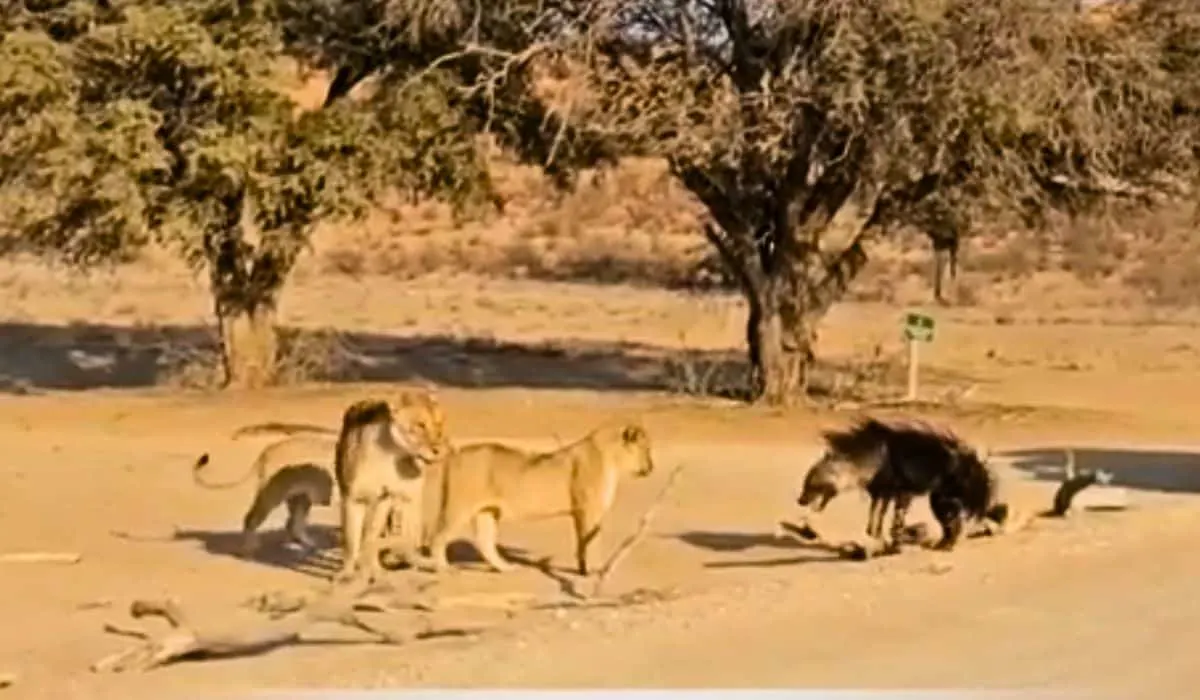The savannas of Africa play host to one of nature’s most captivating rivalries – the ongoing conflict between lions and spotted hyenas. For centuries, these apex predators have engaged in a complex relationship characterized by competition, confrontation, and occasionally, reluctant coexistence. Far from the simplistic portrayal in popular media, the lion-hyena relationship represents a sophisticated ecological dance that shapes the African ecosystem. This ancient standoff influences hunting behaviors, territorial boundaries, and even the evolution of both species. As competitors for the same resources and occasional predators of each other, lions and hyenas exemplify the intricate balance of power that exists in nature. Their interactions range from tense standoffs to violent clashes, all conducted against the backdrop of the unforgiving African wilderness where survival demands both strength and strategy.
Ancient Rivals: The Evolutionary Context
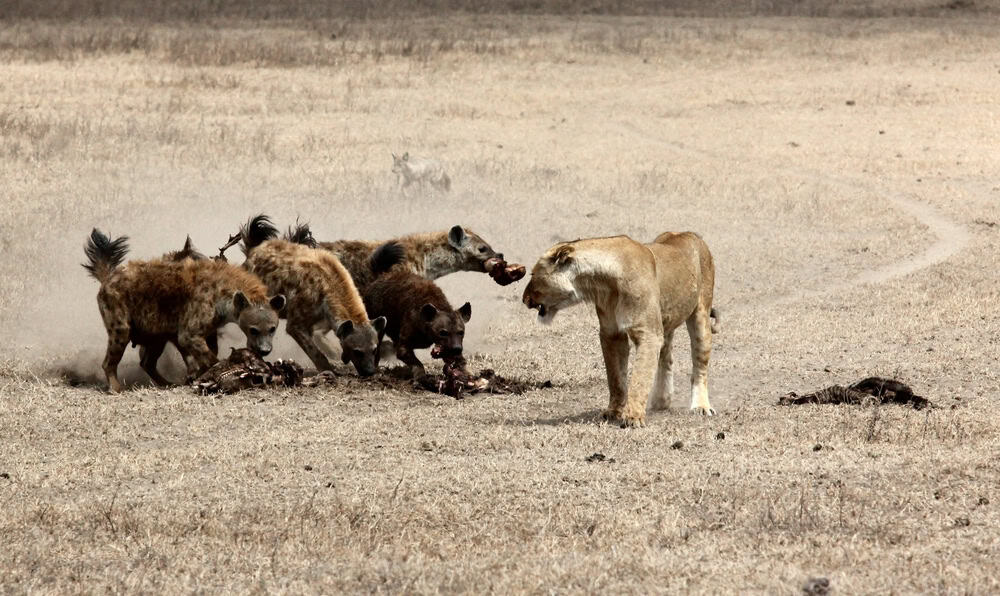
The rivalry between lions and hyenas dates back millions of years, evolving alongside the development of the African savanna ecosystem. Paleontological evidence suggests that these two predators have been competing for resources since the Pleistocene epoch, approximately 2.5 million years ago. This long-standing competition has shaped both species through evolutionary pressures, influencing everything from body size to hunting strategies and social structures.
Lions evolved as powerful, pride-based hunters capable of taking down large prey, while hyenas developed as highly efficient clan-organized predators with incredible bite force and digestive systems capable of processing almost every part of a carcass, including bones. Through generations of conflict, each species has refined its survival strategies in response to the other’s presence, creating a biological arms race that continues to this day on the African plains.
Ecological Roles: Competitors and Keystone Species
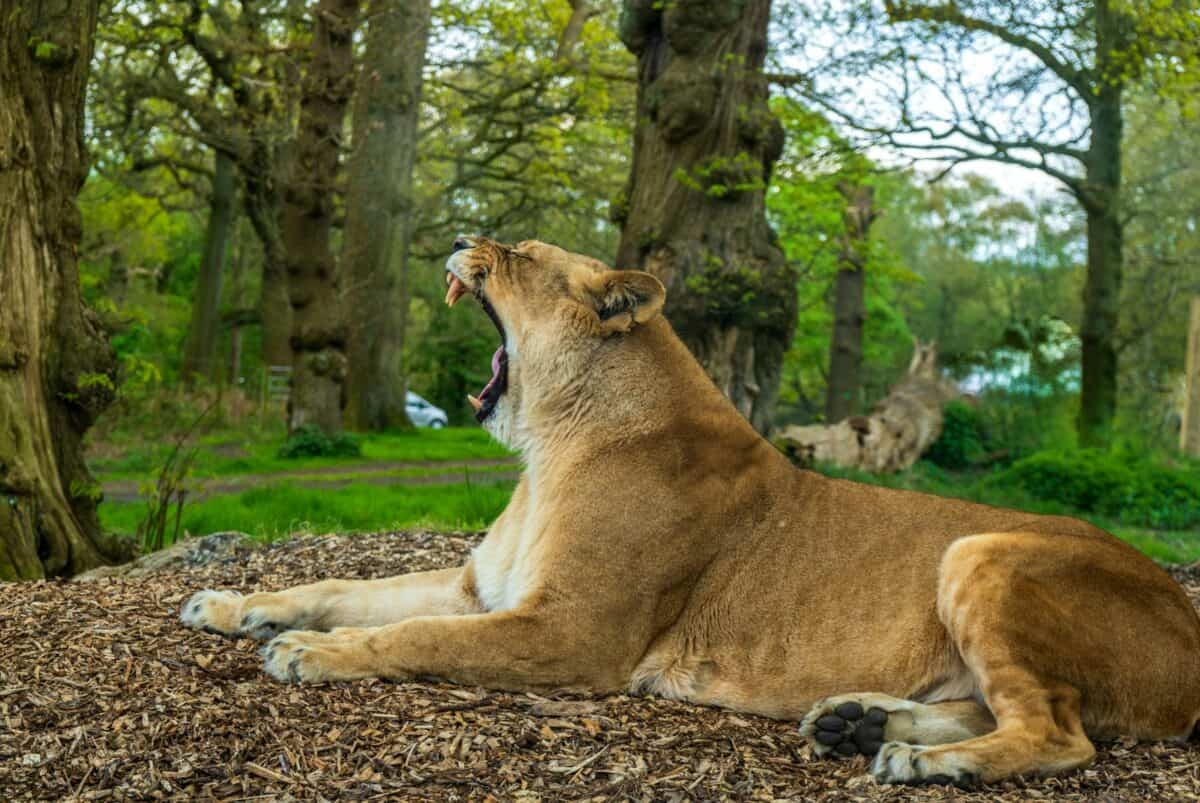
Both lions and hyenas function as keystone species within their ecosystem, meaning their presence significantly affects the balance of other plants and animals around them. As apex predators, they regulate herbivore populations, which in turn influences vegetation patterns across the savanna. This creates cascading effects throughout the entire food web, demonstrating how the lion-hyena relationship impacts far more than just the two species involved.
Their competitive relationship also creates ecological niches that allow other scavengers and smaller predators to exist. When lions and hyenas focus their energy on competing with each other, it sometimes creates opportunities for jackals, vultures, and other scavengers to access resources they might otherwise be excluded from. This complex web of interactions helps maintain biodiversity in African ecosystems, making the lion-hyena relationship fundamentally important to environmental health.
Social Structures: Prides Versus Clans

The social organization of lions and hyenas plays a crucial role in their ongoing conflict. Lions operate in prides – family units typically consisting of related females, their offspring, and a small number of adult males. These prides function as cooperative hunting units and defensive alliances, with females doing most of the hunting while males primarily defend territory against rivals and hyenas.
Spotted hyenas, contrary to popular misconception, live in complex social groups called clans that can number up to 80 individuals. These clans are matriarchal, with females being larger and more dominant than males. Hyena society features sophisticated hierarchical structures with dominance passed from mother to offspring. Their clan organization allows hyenas to collectively defend kills against lions and occasionally mount coordinated attacks to steal lion kills. This fundamental difference in social structure – patriarchal pride versus matriarchal clan – creates fascinating dynamics when the two species interact in the wild.
Resource Competition: The Heart of the Conflict

At the core of the lion-hyena conflict lies competition for the same limited resources: prey, territory, and water. Both predators target similar prey species, with a preference for medium to large ungulates like wildebeest, zebra, and various antelope species. This direct dietary overlap naturally places them in conflict, particularly during seasonal scarcity when prey becomes limited.
Studies in ecosystems like the Serengeti and Masai Mara have documented extensive competition, with up to 60% overlap in prey selection between lions and hyenas. The situation intensifies during dry seasons when prey congregations near water sources create hotspots for predator-prey interactions – and consequently, predator-predator conflicts. Research has shown that in areas with high lion density, hyenas may shift their hunting patterns to avoid direct competition, hunting more frequently at night or targeting different prey species, demonstrating how this competition shapes the ecological behaviors of both predators.
Kleptoparasitism: The Art of Theft

One of the most dramatic aspects of the lion-hyena relationship is kleptoparasitism – the theft of food from one predator by another. This behavior occurs in both directions, though with different strategies. Lions, with their greater size and strength, can often drive hyenas away from their kills through sheer intimidation. A pride of lions approaching a hyena kill will typically send the hyenas retreating, regardless of the hyenas’ numbers.
Conversely, hyenas rely on numerical advantage to challenge lions. A large enough clan of hyenas can successfully drive off a smaller group of lions through persistent harassment and coordinated attacks. Research in the Ngorongoro Crater found that hyenas successfully stole kills from lions in approximately 50% of observed encounters when hyenas outnumbered lions by at least 4:1. This dynamic creates a perpetual tension where neither species can afford to lower its guard while feeding, turning every successful hunt into a potential conflict zone.
The Numbers Game: Group Size and Power Dynamics
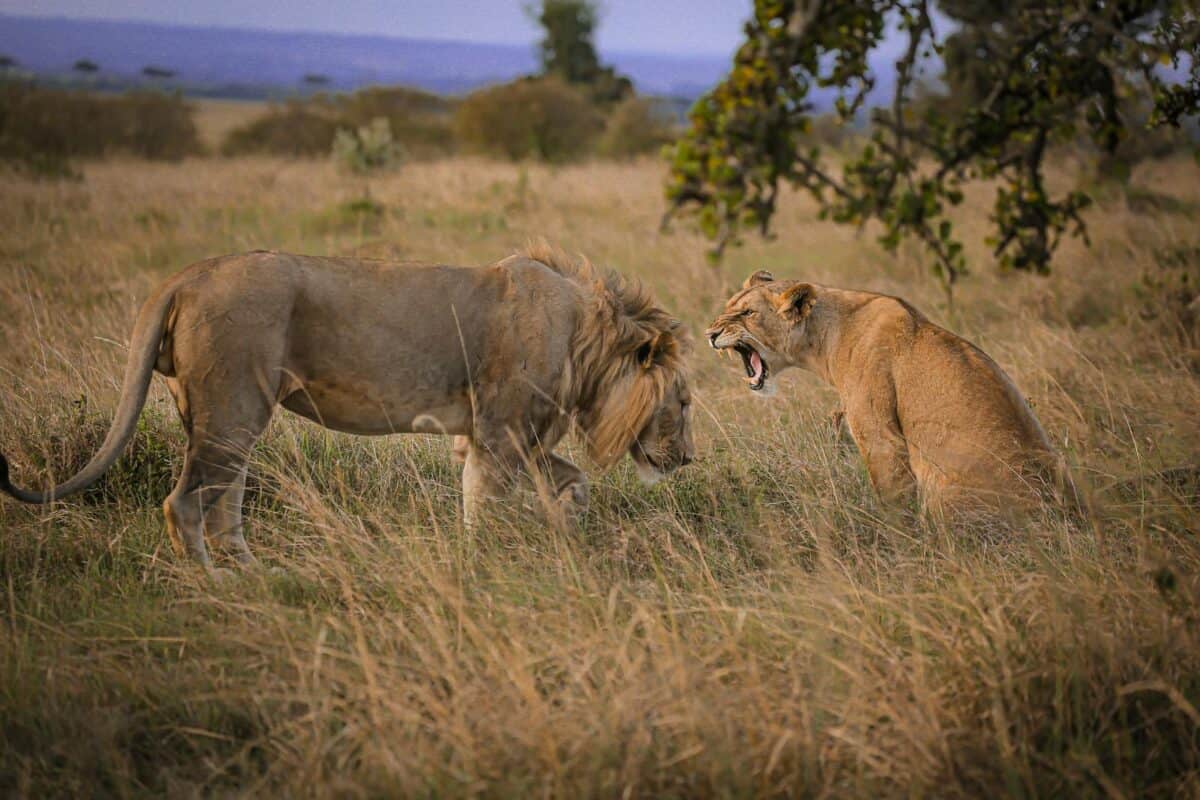
The outcome of lion-hyena encounters is heavily influenced by the numbers present on each side, creating a fascinating power dynamic that shifts based on group composition. A single male lion can typically drive off multiple hyenas, but the equation changes dramatically as numbers shift. Research in Kenya’s Masai Mara found that hyenas need a numerical advantage of approximately 3:1 to challenge female lions and 4:1 to challenge male lions successfully.
This numbers game creates strategic decision-making for both species. Lions must assess whether to defend a kill against approaching hyenas based on the hyena clan size, while hyenas must decide whether they have sufficient numbers to challenge lions. Field observations reveal that both species appear to make these calculations rapidly, with distinct vocalizations often being used to recruit additional support. Male lions frequently respond to the sounds of hyenas feeding, suggesting they opportunistically seek to steal hyena kills when conditions favor them. Similarly, hyenas have specialized whoop calls that can travel over long distances to rally clan members when confronting lions.
Territorial Disputes and Boundaries
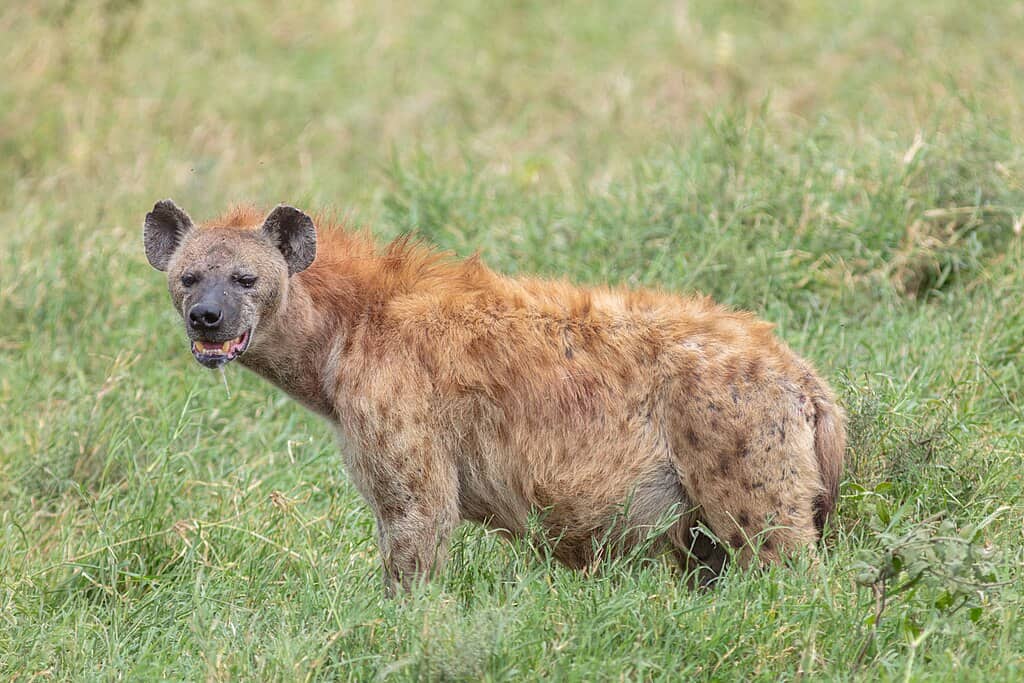
Beyond competition for individual kills, lions and hyenas engage in broader competition for territory. Both species require large ranges with access to water, prey, and denning or birthing sites. Research using GPS tracking collars shows that lion prides and hyena clans actively avoid core areas of their competitors’ territories when possible, creating a complex patchwork of overlapping home ranges with buffer zones in between.
Lions mark and defend territories primarily through roaring, scent marking, and direct patrolling, while hyenas use communal “latrines” and vocal “whooping” to advertise their presence. These territorial systems sometimes result in direct conflict, particularly when young are present. Lions have been documented specifically targeting hyena dens to eliminate competition, while hyenas occasionally harass lionesses with cubs. In areas of high competition like Kenya’s Mara-Serengeti ecosystem, researchers have documented shifts in denning and birthing locations to less optimal but safer areas, demonstrating how this competition affects fundamental aspects of both species’ reproduction and survival strategies.
Predation Between Rivals: The Ultimate Conflict

Perhaps the most dramatic aspect of the lion-hyena relationship is direct predation – instances where one species not only kills but consumes the other. This behavior goes beyond simple competition and enters the realm of interspecific predation. Male lions, in particular, are known to kill hyenas, often without consuming them, in what appears to be competitive elimination rather than predation for food. However, in some documented cases, lions do consume hyenas, particularly during periods of prey scarcity.
Hyenas, while typically avoiding direct confrontation with adult lions, opportunistically target lion cubs when possible and will kill and consume wounded or isolated lions. A 10-year study in Tanzania’s Serengeti documented that up to 27% of lion cub mortality in some areas could be attributed to hyena predation. This mutual predation creates a heightened state of vigilance and aggression when the two species encounter each other, with immediate assessment of vulnerability and opportunity dictating whether an interaction escalates to deadly conflict or remains a tense standoff.
Visual and Vocal Communication: The Language of Conflict
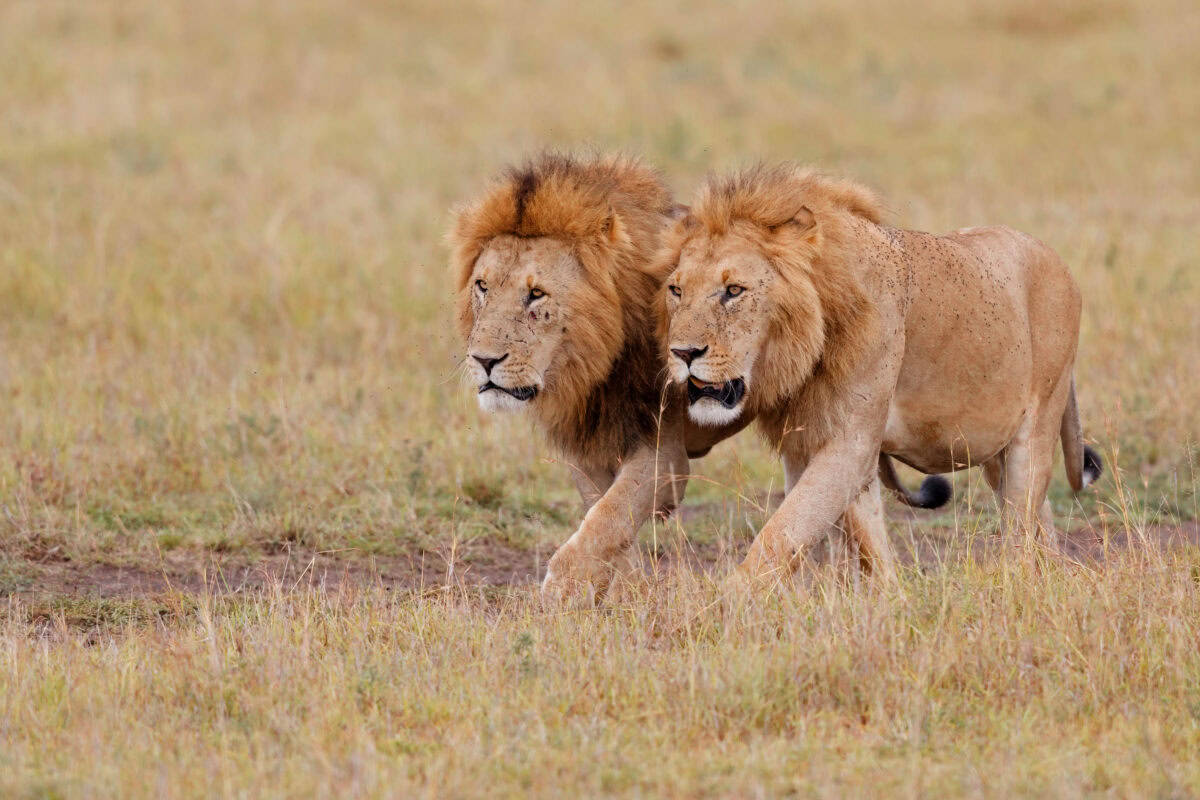
The interactions between lions and hyenas involve sophisticated communication systems that have evolved specifically for these confrontations. Both species use distinctive body postures, facial expressions, and vocalizations to signal their intentions and level of threat. Lions display typical felid aggression signaling – lowered heads, flattened ears, and exposed teeth – while hyenas adopt a characteristic forward-leaning stance with raised hackles when confronting lions.
Vocalizations play a crucial role in these standoffs. Male lions use specific roaring patterns when hyenas are present that differ from territorial roars or mating calls. These “confrontational roars” are deeper and more sustained, designed for maximum intimidation. Hyenas, meanwhile, use complex vocal signals that communicate both to the lions and to fellow clan members. Their famous “whoop” calls can recruit assistance from distant clan members, while a higher-pitched “giggle” often indicates nervousness during tense encounters. Research using audio playback experiments has demonstrated that both species can recognize the vocalizations of the other and assess threat levels accordingly, showing how communication has evolved specifically around this interspecies conflict.
Regional Variations in the Relationship
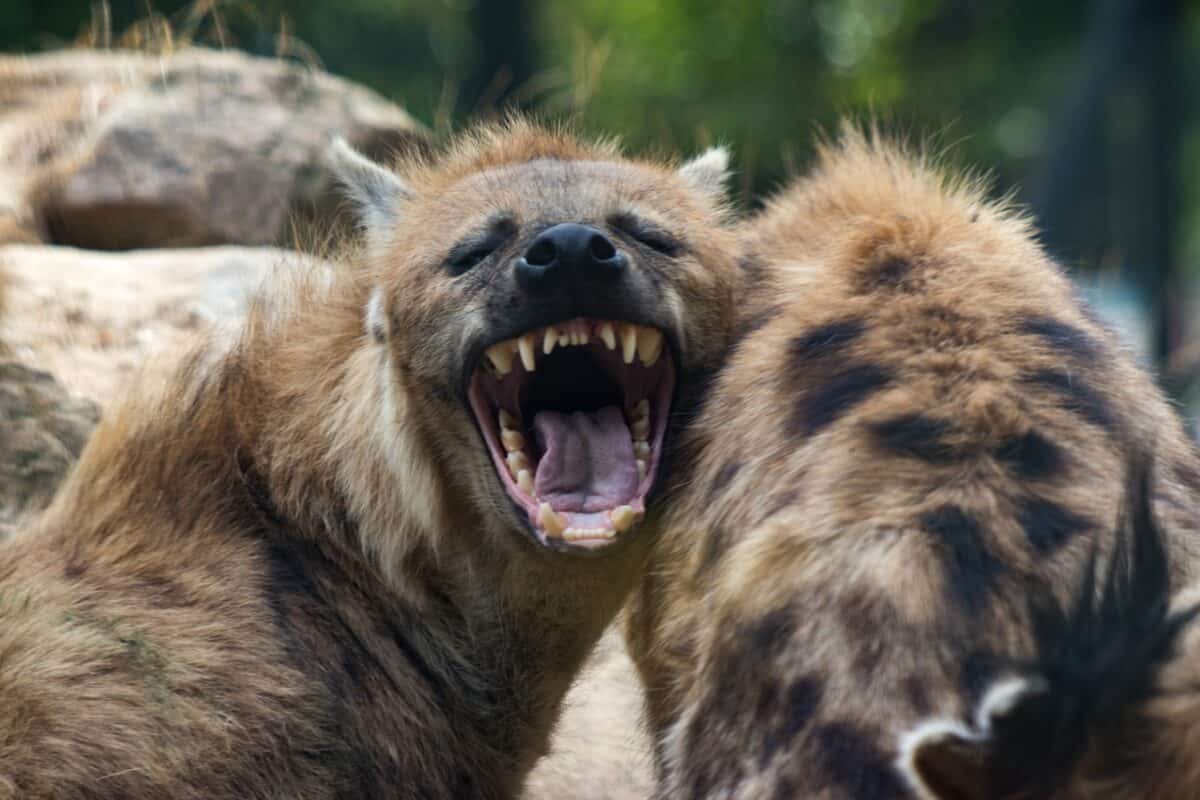
The dynamics between lions and hyenas vary significantly across different African ecosystems, creating a mosaic of relationships rather than a uniform pattern. In open plains like the Serengeti, where visibility is high, direct confrontations occur more frequently, with dramatic standoffs and kill thefts being common. In contrast, in more densely vegetated regions like Kruger National Park, the relationship tends toward avoidance strategies, with temporal separation being more important than direct confrontation.
Local prey abundance also significantly affects the intensity of the relationship. In the Ngorongoro Crater, where both predators exist at unusually high densities within the confined crater walls, competition is particularly intense. Studies there show higher rates of direct aggression than in areas where territories can expand during resource scarcity. Human influences further complicate this picture; in regions where lion populations have been reduced by poaching or habitat loss, hyenas often become the dominant predator, shifting the ecological balance. These regional variations demonstrate that the lion-hyena relationship is not fixed but adapts to specific ecological contexts.
Human Perceptions and Cultural Symbolism

The conflict between lions and hyenas has captured human imagination for millennia, finding expression in folklore, cultural symbolism, and modern media. Traditional African stories often portray this relationship, though interpretations vary widely between cultures. In some traditions, the cunning hyena outwits the powerful lion, while in others, the lion represents noble strength against the devious hyena. These cultural depictions have influenced global perceptions, often to the detriment of hyenas, who are frequently mischaracterized as solely scavengers rather than accomplished predators.
Modern media has further shaped public perception, with documentaries and films like Disney’s “The Lion King” cementing simplified narratives about this complex relationship. This cultural framing has real-world conservation implications, as lions typically receive greater public support and conservation funding than hyenas, despite both species facing significant threats. Conservation biologists now work to counter these biases by educating the public about the ecological importance of both predators and the sophisticated nature of their interactions, emphasizing that neither species is the “villain” in this evolutionary drama.
Conservation Implications: Protecting a Natural Rivalry

As both lions and spotted hyenas face mounting threats from habitat loss, poaching, and human-wildlife conflict, the conservation of their ancient rivalry becomes increasingly important. Protecting this relationship isn’t merely about preserving two species but maintaining the ecological processes they drive. When either population declines significantly, it creates ripple effects throughout the ecosystem. For example, research in areas where lions have been eliminated shows that hyenas often cannot provide the same regulatory control over mesopredators like jackals, leading to complex changes in the predator community.
Conservation strategies increasingly focus on preserving not just the species but their interactions. This requires protecting sufficiently large protected areas that can support viable populations of both predators along with their prey base. It also necessitates wildlife corridors connecting these protected areas, allowing for natural population dynamics and gene flow. Initiatives like the Lion Recovery Fund and large-scale landscape conservation projects across East and Southern Africa are working to ensure that future generations will still witness the dramatic standoffs between these ancient rivals, preserving one of nature’s most compelling ecological relationships.
Conclusion: A Balanced Antagonism

The silent standoff between lions and hyenas represents one of nature’s most perfectly balanced antagonisms – a relationship forged through millions of years of shared evolution and competition. Neither species has managed to eliminate the other, creating instead a dynamic equilibrium that shapes both predators and the ecosystems they inhabit. This relationship transcends simple competition, incorporating elements of mutual avoidance, opportunistic exploitation, territorial negotiation, and occasionally, direct conflict.
As we deepen our understanding of this complex relationship, we gain insights not only into these specific species but into broader ecological principles about competition, coexistence, and adaptation. The lion-hyena relationship demonstrates how seemingly antagonistic interactions can ultimately strengthen both competitors, driving evolutionary adaptations and ecological specializations that allow for continued coexistence. Their eternal standoff serves as a powerful reminder of nature’s complexity and the delicate balances that sustain biodiversity.
For conservation efforts to succeed, they must preserve not just the species themselves but the ecological dance they perform – ensuring that future generations can still witness the tension-filled moments when lions and hyenas lock eyes across the savanna in their ancient, ongoing standoff. In protecting this rivalry, we protect a fundamental piece of Africa’s ecological heritage and one of nature’s most compelling evolutionary stories.
As climate change and human development continue to transform African landscapes, the future of this relationship remains uncertain. Yet the remarkable resilience both species have shown throughout their evolutionary history suggests that as long as there are plains and prey in Africa, the silent standoff between lions and hyenas will continue – a testament to the power of evolutionary competition and ecological balance.
- Why Polar Bears Cover Their Black Noses While Hunting - August 15, 2025
- How Snakes Became a Central Theme in Chinese Zodiac Legends - August 15, 2025
- Can Animals Predict Earthquakes? The Science Behind the Mystery - August 15, 2025

